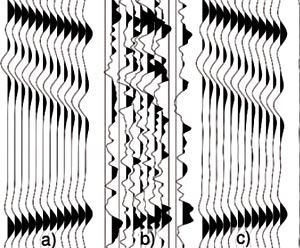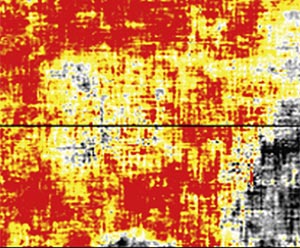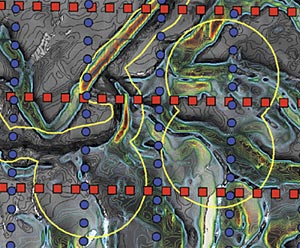I am pleased to have observed a renewed interest in seismic signal processing at our latest annual convention. We had an unprecedented number of sessions devoted to seismic signal processing. All of these sessions were well attended, which signals a growing interest in reinvigorating the field of seismic signal processing. Noise attenuation and seismic signal reconstruction methods are key components of seismic data flows for preconditioning seismic volumes prior to imaging and inversion. For this issue of the RECORDER we have compiled an interesting group of papers that explore current problems in seismic data preconditioning. These papers are also a small taste of the type of work presented at our 2012 CSEG convention.
Cary and Perz discuss the nature of footprint attenuation after 5D interpolation. The authors reach an interesting conclusion that explains the excellent performance of 5D interpolators at the time of attenuating acquisition footprints. This topic has stirred some controversy between interpolation connoisseurs. Nevertheless, it is a clear step forward in our path to gain understanding of the benefits and limiting constraints of current interpolators.
Kreimer and Sacchi examine a tensor algebra solution to the problem of 5D seismic data reconstruction. The methodology forms part of current efforts in matrix and tensor completion. This is an area of active research because it is connected to the field of collaborative filtering; a subfield of computer sciences that attempts to predict consumer preferences via the analysis large data sets. In our case, we attempt to predict traces by considering that the ideal pre-stack 5D seismic volume is represented via a low-rank tensor.
Butler presents two articles addressing two classical problems in exploration seismology: attenuation of random noise and attenuation of strong noise (outliers). Butler reports a method that uses principal components to estimate a time domain signal template that is used to estimate the enhanced signal. Butler also discuses his preference for algorithms that operate in the time domain as an alternative to classical frequency domain noise attenuation strategies. In a second article, Butler proposes an algorithm based on short window Fourier transforms in conjunction with a threshold and replacement strategy to eliminate noise bursts. Real data examples show that the proposed method can attenuate noise bursts, ground roll and offline energy in an effective way.
Finally, Grossman and Couzens discuss a robust process to rotate laterally polarized data measurements into radial and transverse coordinates. For this purpose, the authors developed an automatic multicomponent receiver-azimuth detection algorithm. The method uses azimuthal multicomponent information extracted from the P-wave first break, which is present in all three recorded components and a constrained optimization algorithm to estimate the best orientation for a given receiver.
I hope you enjoy reading these papers as much as I did.















Join the Conversation
Interested in starting, or contributing to a conversation about an article or issue of the RECORDER? Join our CSEG LinkedIn Group.
Share This Article